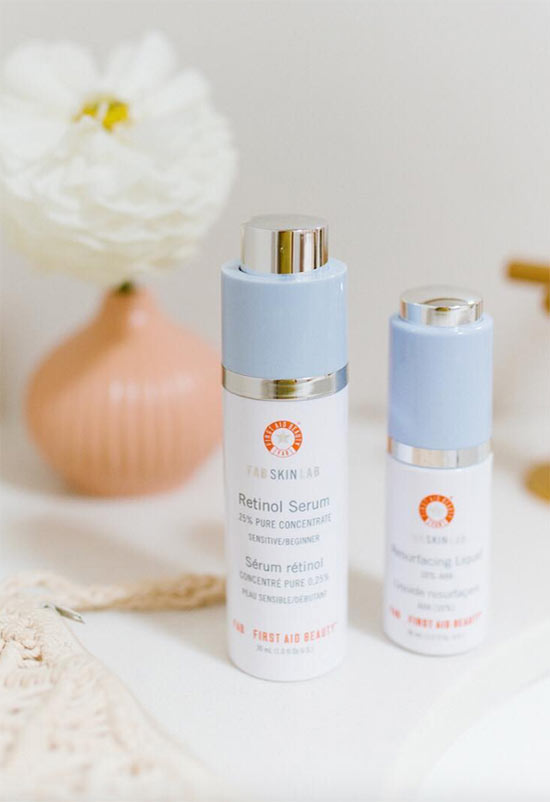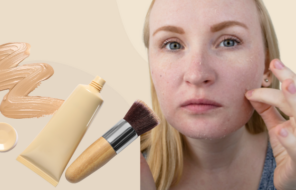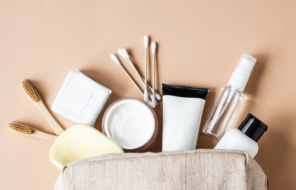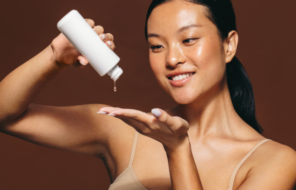At this point we’re sure you have heard of glycolic acid since it is a staple in the skin care world. The question is, do you really know what glycolic acid is about? Do you understand how it works, and what the glycolic acid benefits are? If you don’t, it’s time to clear up the misconceptions so you can figure out if glycolic acid is right for you, and in which way!
Almost everyone can use glycolic acid as long as they understand how to use it safely. In this article, we cover everything you need to know about glycolic acid. We’ll explain exactly how it works, what kind of products it shows up in, how to choose the right glycolic acid products based on your skin type and skin concerns. Also we’ll give you all of the glycolic acid safety notes, and a thorough explanation of how to use it. Happy exfoliating!
In this article:
- What Is AHA/ Glycolic Acid?
- Types of Glycolic Acid Products for Skin
- Glycolic Acid Benefits
- Possible Glycolic Acid Side Effects
- Glycolic Acid and Sun Safety
- How to Make Sure You Don’t Overuse Glycolic Acid
- Glycolic Acid vs. Salicylic Acid vs. Other Chemical Exfoliants
- Glycolic Acid vs. Scrubs and Physical Exfoliants
- How to Choose Glycolic Acid Products for Your Skin Type
- How to Use Glycolic Acid in Skin Care
What Is AHA/ Glycolic Acid and How Does It Work?
Glycolic acid is the most commonly used type of alpha-hydroxy acid, also known as AHA. This acid can be derived from natural sources like sugar cane, pineapple, cantaloupe, and grapes, although these days it’s usually just synthesized in a lab.
In skin care, glycolic acid works as an incredible chemical exfoliant, helping to remove build-up of dead skin from the surface. Once applied to the skin glycolic acid is able to penetrate the top layers of the stratum corneum (the top layer of our skin, which is mostly composed of dead skin cells and the lipids that hold them together), unlike other skin care products that only work at the very surface of the skin.
The glycolic acid dives down deep and weakens the lipids that bind our dead skin cells together. This allows our skin to shed the dead skin cells in a much more thorough way than if one were to use a physical scrub.
By improving the process of skin shedding, glycolic acid helps other ingredients better penetrate into the skin, and it has also been shown to improve the process of skin cell reproduction, overall improving the look of fine lines and increasing the firmness of the skin.
In addition to that, glycolic acid also works as a humectant. It pulls moisture from the air and into the skin, so it has an instant softening and hydrating effect. This makes it a great exfoliant choice for people with dry skin.
Types of Glycolic Acid Products for Skin
Glycolic acid can take many forms, and it can show up in all kinds of skin care products. You can decide which glycolic acid products would be best for you based on your pre-existing skin care routine.
Some people prefer a glycolic acid product that they can use every day, while others prefer using a glycolic acid product only once or twice a week. Not all glycolic acid products were made equal, with some being more effective than others – keep that in mind before buying any old skin care product.
Glycolic Acid Toners
A toner is one of the best ways of introducing glycolic acid to the skin. Toner formulas are usually very simple and are ideal for daily use of glycolic acid. Because of that they will usually have a lower amount of glycolic acid – between 5% and 10%.
Since toners are very light they can easily penetrate into the skin. The only drawback to glycolic toners is that they can be applied either with a cotton pad, which wastes a lot of product, or with the hands which, because of their liquid texture, can be quite messy.
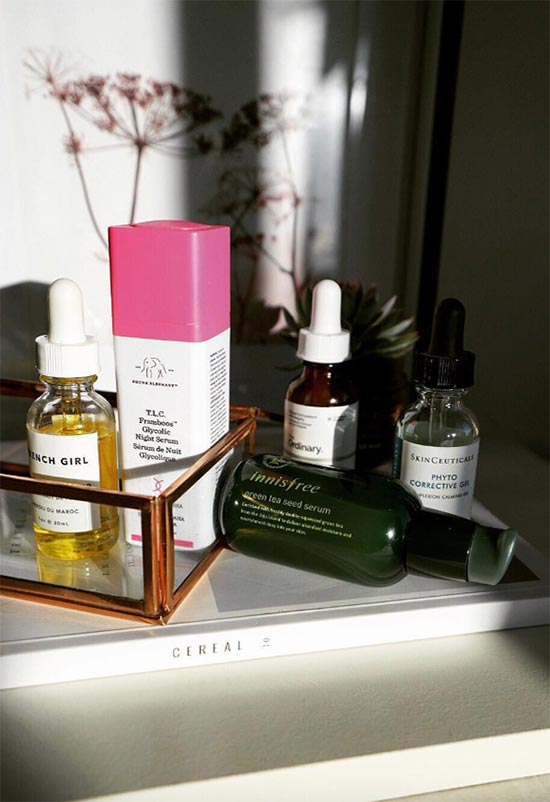
Glycolic Acid Serums and Gels
Serums or gels with glycolic acid are another great way of treating the skin. The texture of a serum is still quite light, so penetration is fairly optimal, but the application method is easier.
Serums will often include more than just the glycolic acid – they can have other skin care ingredients that will help your skin in additional ways. Depending on your skin type you can choose a serum with glycolic acid that will also have anti-aging, anti-acne, brightening, or soothing properties.
As with toners, these glycolic acid products will also have a lower concentration of glycolic acid that is appropriate for daily use.
Glycolic Acid Peels
Peels are glycolic acid products with a similar texture to a serum, but with a much higher concentration of acid. Because of the high acid content they can only be used between once and four times a week, and they need to be rinsed away in twenty minutes after they’ve been applied to the skin.
They tend to get deep and give a very thorough exfoliation. Since glycolic acid can only be sold at up to 10% in many countries, over-the-counter peel products will combine a few different types of acids to give a stronger exfoliation. However, for a truly powerful peel, you would have to go to a salon or a dermatologist’s office.
At between 30% and 70%, glycolic acid is when the results of peels are especially strong – after multiple sessions things like scarring and hyperpigmentation tend to seriously fade. As long as one is careful and attentive to their skin, chemical peels may be combined with the regular use of a glycolic acid serum at home.
Glycolic Acid Facial Masks
Glycolic acid masks are somewhat similar to peels in that they need only be used on a weekly basis. However, masks tend to have a thicker, more gloopy texture, and the percentage of glycolic acid in them is usually lower.
They’re a good choice for people with sensitive skin who want to try glycolic acid, and they can also be used in conjunction with glycolic acid serums. They can make for a nice, luxurious treatment, but they are not the best method of delivering glycolic acid to the skin, since their texture is thicker.
Glycolic Acid Creams and Lotions
Glycolic acid tends to penetrate more slowly into the skin when it comes in a lotion or gel formula. This is because lotions have a thicker texture than serums and liquids, so they take longer to penetrate into the skin.
They are also much more moisturizing and softening than your average serum or lotion. This makes creamier glycolic acid products great for people whose skin doesn’t tolerate the fast acting liquids and serums, or anyone who doesn’t want to use too many products in their routine.
A great night time routine could be just a cleanser followed by a glycolic acid cream, for example. Creams with glycolic acid can work for all skin types – it totally depends on their formula.
Glycolic Acid Cleansers
Personally, I’m not a fan of glycolic acid cleansers, but perhaps that isn’t fair. In a cleanser, glycolic acid is simply not capable of having a great impact on the skin, since it doesn’t sit on the skin long enough to penetrate.
However, this doesn’t mean that cleansers with glycolic acid in them have zero impact. If massaged into the skin for at least half a minute, some of the glycolic acid should still have a small effect on the skin.
They can also prepare the skin to better receive other glycolic acid products. Cleansers with glycolic acid can work for those with extremely sensitive skin, and just in general, they can be great cleansers.
Glycolic Acid Benefits
Exfoliation is an essential skin care step, and glycolic acid is one of the best ingredients for that! That’s why just about anyone can use glycolic acid. Even those with sensitive skin can use glycolic acid as long as they are careful.
In addition to keeping the skin in a healthy condition, glycolic acid is great for the following issues:
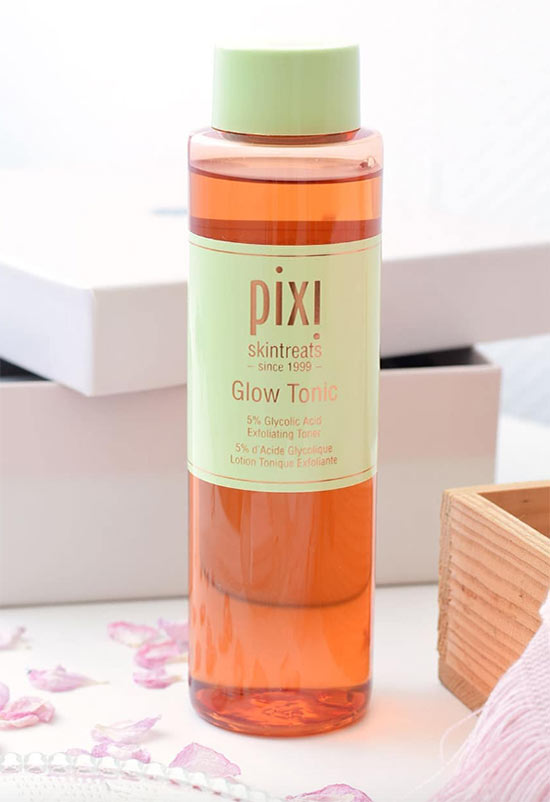
Glycolic Acid Treats Dryness and Dehydration
Dryness and dehydration are solved with the help of glycolic acid in two ways. First of all, glycolic acid has humectant properties, so it is able to infuse the skin with moisture and hydration. Secondly, by removing the dead skin build-up, serums and moisturizers can do a much better job of nourishing and moisturizing the skin, making it feel healthy and silky soft.
Reduces Fine Lines and Wrinkles
Fine lines tend to be exacerbated by dead skin build-up, so in that sense, glycolic acid benefits include very quickly improving the look of fine lines and wrinkles. Additionally, because glycolic acid improves skin cell regeneration and collagen production, over time it can also somewhat firm up the skin and reduce wrinkles.
Glycolic Acid Treats Hyperpigmentation
Hyperpigmentation and dark spots can be significantly reduced with the help of glycolic acid. Glycolic acid benefits include being able to remove the skin that has been damaged and pigmented, as well as an ability to improve the skin cell reproduction, leading to the creation of new and healthy skin cells.
However, this process is slow and requires regular use of glycolic acid. A series of peels with 20% to 70% will help get rid of hyperpigmentation the fastest, especially when combined with regular use of skin brighteners like vitamin C or niacinamide.
Since hyperpigmentation exists on a few levels of the epidermis, sometimes it can seem to get worse before it gets better – this is because the hyperpigmentation can be wider spread on a middle level of the epidermis, and when you’re only part way through your glycolic acid regimen, you might begin to reveal those layers.
With time, however, the hyperpigmentation can be greatly reduced even with that initial worsening.
It Fades Scarring
Scarring, much like hyperpigmentation, is best fixed with a “out with the old, in with the new” skin care strategy, which glycolic acid fits into beautifully. Scars do take longer to completely get rid of than other skin concerns, so it best to use a mixture of daily glycolic acid products along with a stronger weekly peel.
A routine that combines retinol and glycolic acid will also work beautifully, for example, with glycolic acid in the daytime, retinol at night, and the occasional glycolic acid peel.
Fights Acne
Acne is caused by a few factors, one of which is the congestion of the pore with dead skin cells. Glycolic acid has been proven to help reduce acne through many different studies. By helping remove the dead skin cells, the pores become cleared and the breakouts stop occurring.
Glycolic acid also helps to remove the damaged skin, thereby speeding up the healing of acne. It is especially effective when paired with some sort of antibacterial treatment like benzoyl peroxide, or when used in combination with salicylic acid.
Clears Blackheads and Whiteheads
Blackheads and whiteheads are even easier to clear with the help of glycolic acid. Glycolic acid is especially great for removing whiteheads, since whiteheads are clogged pores covered by a layer of skin.
It also helps with blackheads, which are clogged pores not covered with anything, which makes the sebum and dead skin that clog them become oxidized making them dark in color. Using a combination glycolic and salicylic acid product on a daily basis is the the best choice here, because it will give the most comprehensive exfoliation.
Minimizes Uneven Skin Texture
Uneven skin texture of all kinds can be minimized with the help of glycolic acid. This is because glycolic acid removes old, damaged skin, and allows the skin to better produce new skin cells. This leads to healthier skin that behaves better and has a smoother texture.
Treats Keratosis Pilaris
Keratosis pilaris is a condition, in which the skin overproduces the keratin protein, and it leads to rough bumps on the arms, thighs, and/ or face. Glycolic acid does an excellent job of helping the skin shed the excess keratin by melting the lipids that hold everything together.
Possible Glycolic Acid Side Effects
As with any skin care ingredient, glycolic acid products won’t work for everyone. Make sure you know what the potential side effects can be – some of them are benign, other glycolic acid side effects can be harmful, but the greatest risk comes from using glycolic acid products improperly.
These are the potential side effects:
Sun Sensitivity
Sun sensitivity is a side effect that always occurs when people start using glycolic acid. Using glycolic acid puts you at a higher risk for both sunburn and for long-term issues like increased hyperpigmentation and premature aging. If you use glycolic acid, wearing a daily sunscreen becomes absolutely mandatory.
Itching or Burning Sensation
Tingling, itching, or a slight burning sensation, along with a slight reddening of the skin can occur the first time you use glycolic acid, especially if you use it in the form of a stronger glycolic acid peel. This feeling should go away a few minutes after the glycolic acid product is rinsed away.
Usually the feeling goes away completely after a few uses of glycolic acid products, but if you’re using a daily product and it doesn’t, then glycolic acid might not be for you.
Flakey Skin
Peeling or flakey skin is not so much as a side effect as they are the intended purpose of glycolic acid. Glycolic acid forces the skin to shed itself, which would ideally be a seamless process that just leaves the skin feeling smooth.
However, it can also lead to the skin visibly peeling. If this is your only side effect, a very light physical exfoliation should help, and the peeling should stop after a couple of weeks.
However, if the peeling only starts after a few weeks, or if your skin is also tight or irritated, then this might be a sign of over-exfoliation.
Over-Exfoliation
Over-exfoliation is an important thing to watch out for. Over-exfoliation makes the skin look tight, weirdly shiny, and flakey, and it makes it feel raw, painful, and uncomfortable.
It is very easy to over-do it, either by using glycolic acid more frequently than your skin can handle, or combining it with any other exfoliants. By introducing glycolic acid into your routine slowly and carefully, as I outline below, you can avoid over-exfoliation, and instead enjoy all the glycolic acid benefits.
Skin Irritation
Some people’s skin is simply too sensitive to handle glycolic acid products. If your skin reacts to glycolic acid with instant swelling, severe pain, or extreme redness (slight redness is to be expected after a first time use), it’s possible that it’s simply too harsh for your skin.
Rinse it off, and discontinue use. It’s a good idea to test glycolic acid on the forearm the first time to ensure you won’t have any issues with it.
Acid Burn
Acid burn is a serious risk that can occur, especially with higher concentrations of glycolic acid. Acid burn looks like any burn, with the skin becoming red and painful to the touch for multiple days after the exposure to glycolic acid.
This can happen to patches of the face or all over the skin. In extreme cases an acid burn could even lead to blistering, although that’s not common at all.
Usually burns from glycolic acid happen when a glycolic acid peel is left on the skin for too long, or when it’s applied after one has already been using other powerful skin-resurfacing products.
Acid burns should be treated like other burns, with skin-cooling ointments. It is also okay to take an oral anti-inflammatory like acetaminophen (Tylenol) or ibuprofen (Advil) to reduce the pain, redness, and inflammation. All skin-resurfacing products, including glycolic acid, should not be used at all until the skin has completely healed.
Glycolic Acid and Sun Safety
I love glycolic acid a lot, but it doesn’t mean I’m not a little wary of it as well. The most major risk of glycolic acid is sun exposure, which applies to everyone. Glycolic acid makes the skin more sensitive to sun exposure, and much likelier to burn.
It also reverses all the great skin-brightening, smoothing, and anti-aging effects of the glycolic acid. When using glycolic acid you have to mitigate that risk by being religious about your sunscreen usage. You can do this by using a moisturizer with an SPF in the mornings, and reapplying your sunscreen throughout the day.
Wearing hats and avoiding going outdoors in the middle of the day when the sun is the strongest is also a great idea. Some people think that they don’t need to worry about sunscreen in the winter or on cloudy days, but the truth is that the sun’s rays, while less powerful, still reach us here on earth and they can still do some damage.
How to Make Sure You Don’t Overuse Glycolic Acid
Another risk you need to be aware of when using glycolic acid products is over-exfoliation. When the skin has been over exfoliated, it tends to become red, oddly flakey, tight, dry, and raw/ painful to the touch.

To avoid overusing glycolic acid, it is important to introduce it to your routine slowly. Once you’ve chosen your perfect glycolic acid product from the list of recommendations, start out using it much less than the recommended amount on the package. If it’s a daily serum, only use it once a week for the first week.
On the second week, use it twice, on the third week three times, and so on until you’re using it every day. If at any point in the process your skin starts showing signs of irritation or over-exfoliation, go back to using glycolic acid less frequently.
Following this method your skin becomes slowly acclimated to the glycolic acid, and it also allows you to monitor how your skin responds to it. This way you can find out if there are any issues before any real damage happens.
For peels that are meant to be used multiple times a week, start out only using them once every two weeks, and work your way up to using them more often.
If your skin happens to get over-exfoliated, you need to totally stop exfoliating, start loading it up with moisturizers, and let it heal. Once it’s healed, you can slowly reintroduce glycolic acid into your routine, following the method I outlined above.
Glycolic Acid vs. Salicylic Acid vs. Other Chemical Exfoliants
Glycolic acid falls under the alpha-hydroxy acid category, meaning that it is attached to one carbon, while salicylic acid is a beta-hydroxy acid (with two carbons) – the only one of its kind, in fact!
Salicylic acid is considered better for those with acne or congestion-prone skin as well as for those with sensitive skin. This is because salicylic acid is oil-soluble, meaning it is able to penetrate past oils and better exfoliate within the pore.
Additionally, salicylic acid doesn’t penetrate quite as deeply, and it has anti-inflammatory properties, which make it much better for those with sensitive skin. Lastly, salicylic acid has some antibacterial properties that help it effectively prevent the infection that causes clogged pores to turn into inflamed pimples.
Salicylic acid is normally used at a concentration between 0.5% and 2%. If your skin doesn’t tolerate glycolic acid, you can try salicylic acid as an alternative. Often you will find glycolic acid products that also include salicylic acid.
There are other acids that fall under the AHA category and can also be used to exfoliate the skin. These include lactic acid, which is similar to glycolic acid. Lactic acid has larger molecules, so it is slower to penetrate into the skin. This makes it much more gentle and preferred for dry and sensitive skin types.
Mandelic acid, a.k.a. amygdalic acid, is also quite gentle for the same reasons as lactic acid, and like salicylic acid it also has some antibacterial properties.
There are other AHAs that shows up in skin care often, but usually as supplements to glycolic or lactic acid and hardly ever on their own. These include malic acid, tartaric acid, and citric acid.
Lately we’ve also seen poly-hydroxy acids like gluconolactone and lactobionic acid. These have the largest molecule size so they are more gentle than AHAs, and they also have antioxidant and skin-hydrating properties. Early studies about these acids seem promising, but unlike glycolic acid, they haven’t been out on the market long enough for us to really know how they compare.
Glycolic Acid vs. Scrubs and Physical Exfoliants
You can probably tell I’m biased in favor of glycolic acid products over non-chemical exfoliants. It’s hard not to be because glycolic acid benefits surpass the benefits of physical scrubs by leaps and bounds.
The issue with physical scrubs is that they dislodge dead skin cells in a very rough manner that is uneven and much more potentially harmful to the skin. Physical exfoliation, whether with a scrub, a face cloth, or a manual tool like the clarisonic, works through friction to forcefully remove dead skin cells. This manual action can scratch the skin, cause capillary inflammation, pop pimples, and spread bacteria around.
While glycolic acid also comes with some risks, it is overall much more gentle on the skin, and as long as one uses it properly, none of its drawbacks can compare to the drawbacks of using a physical exfoliant.
At the same time, the exfoliation from glycolic acid and other chemical exfoliants is much more thorough, since it penetrates deeply into the skin and dissolves the glue that holds dead skin cells together. On the other hand a physical scrub only dislodges the already loose dead skin cells on the surface of the skin.
All in all, it is clear that it’s much better to use a chemical exfoliant.
How to Choose Glycolic Acid Products for Your Skin Type
Glycolic acid can work for every skin type, although to be fair, for some skin types a different chemical exfoliant might work better. In this section, I’ll make it easy for you to figure out what your skin type is and what special skin concerns you might have, and I’ll let you know what the best kind of glycolic acid product would be for you, as well as how you should use it.
Glycolic Acid for Dry Skin
You can tell if you have dry skin based on your pore size. Small pores and low production of oil throughout the day are both signs of dry skin. If this is your skin type, and you’re not too sensitive, then you are a perfect candidate for enjoying glycolic acid benefits!
Glycolic acid will help pull moisture into your skin, and will remove the dead skin cells that block moisturizers from adequately treating your skin. For your skin type, it is best to use a daily glycolic acid serum or cream that also includes hydrating ingredients like hyaluronic acid or glycerin.

Glycolic Acid for Normal and Combination Skin
Those with normal skin have medium-size pores all over their face, while those with combination skin usually have larger pores in the T-zone and small or medium sized pores on the rest of their face. Usually there will be heavier oil production in the T-zone, and little to no oil production on the rest of the face.
For these two skin types, glycolic acid is a great choice, and the type of glycolic acid products that work best depends on the kind of skin concerns one has. For simple maintenance of skin health, a low percentage glycolic acid toner or serum for daily use is the best way to go. It can have other ingredients, like natural plant extracts or vitamins for prevention of premature aging.
If you have specific skin concerns like hyperpigmentation or acne, you can read more about that in the section about glycolic acid benefits.
Glycolic Acid for Oily Skin
Those with oily skin usually have larger pores, and their skin tends to produce a lot of oil throughout the day. Traditionally, those with oily skin are recommended salicylic acid instead of glycolic acid, although the truth is that glycolic acid can also have benefits for oily skin.
Because glycolic acid exfoliates more deeply it can have a bigger effect on the overall skin texture, which tends to be a little rougher and thicker when one has oily skin. Those with oily skin can enjoy the best of both worlds by using a serum or toner that contains both glycolic and salicylic acid.
They can also use one acid during the day, and another at nighttime. For more thorough skin resurfacing, they can do weekly or monthly glycolic acid peels, while using salicylic acid on a daily basis.
Glycolic Acid for Sensitive Skin
If your skin becomes red and irritated very easily, or if you have a lot of visible capillaries (little red marks that look like veins), then that means that you likely have sensitive skin.
Those with sensitive skin are not the ideal candidates for glycolic acid, so they should use it either at a very low percentage (below 5%), or in a form where it doesn’t impact the skin as strongly, like in a thick cream or mask, or in a cleanser.
For those with sensitive skin, it is very important to introduce acids to the skin in a very slow, gradual manner. Lactic acid tends to be the better choice for those with dry sensitive skin, while salicylic acid is more frequently recommended for those with oily sensitive skin.
How to Use Glycolic Acid in Skin Care
There are two common ways of using glycolic acid in skin care. One way is as a daily product, at a lower concentration. In my opinion, this is the better way of using glycolic acid products because its low impact but repeated use makes it very effective.
The second way is as a weekly peel, which requires a glycolic acid product at a higher concentration. Using it this way works better for people aiming for significant skin resurfacing (for example, if they are trying to get rid of scars or dark spots), but it is also when acid burns and irritation are likelier.
Daily Glycolic Acid Routine for Either AM or PM
Note that for most people, glycolic acid should not be used more than once a day. It’s up to you if you want to use it in the daytime or in the evening.
- Cleanse
Before starting, make sure to wash your hands! Begin with a gentle cleanser – ideally one that has a low pH and is completely oil free. Glycolic acid is less effective at an alkaline environment, so avoiding high-pH cleansers will greatly improve its efficacy, while any oil residue from a cleanser will prevent it from penetrating into the skin. The Dermalogica Special Cleansing Gel from Nordstrom totally fits the bill. Use a face cloth or a cotton pad to make sure no residue of cleanser is left on your face.
- Tone
If your cleanser doesn’t have a low pH (or if you’re not sure), you can use a pH-adjusting toner to bring things to balance. The BELIF Witch Hazel Herbal Extract Toner from Sephora is a great choice for this purpose.
- Apply Your AHA
Now you can apply your glycolic acid product. If you also use a serum with vitamin C in the form of ascorbic acid, make sure to apply that first. If you’re also using a salicylic acid product at the same time, it should go on the skin after the vitamin C and before the glycolic acid.
If you use a glycolic acid toner, apply it to your skin with a cotton pad or by splashing it on with your hands. If you’re using a serum with glycolic acid, apply about a dime-sized amount to your fingers, and gently massage into your skin in circular, upward motions. - Give It Some Time
Some sources recommend letting the glycolic acid sit on the skin for around 20 minutes before applying the next product, since the next product will alter the pH of the surface of the skin and render the glycolic acid ineffective. Whether this is true or not has not been tested, with many people reporting that glycolic acid is effective even without the wait time. You can experiment with waiting if you so choose.
- Apply Your Skincare
Now you can apply any additional skincare ingredients, including acne treatments, hydrating serums, and moisturizers.
- Apply SPF
In case of following this routine during the daytime, apply a ¼ teaspoon of sunscreen with at least 30 SPF.
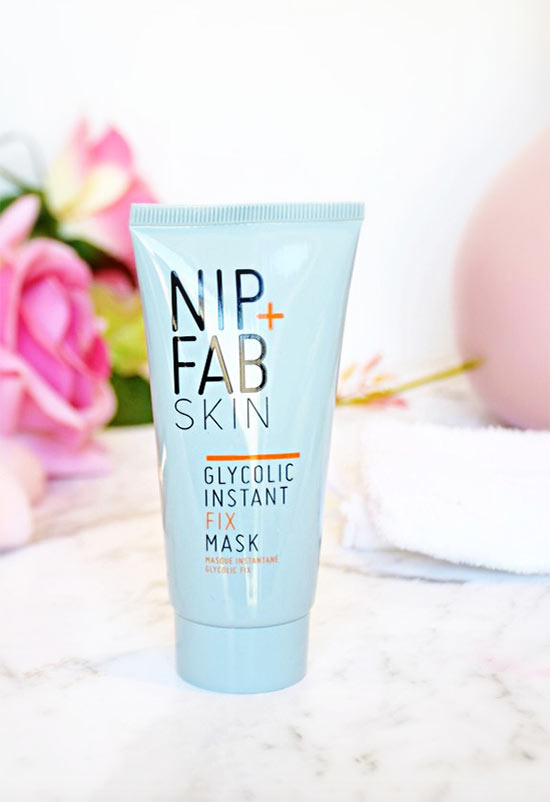
Weekly/ Monthly Glycolic Acid Peel Routine
The percentage of your peel will have an effect on how often you should use it. Most over-the-counter peels will not have more than 30% AHA, so they can be used up to once a week. Higher percentages should be used around twice a month.
- Begin by washing your hands and make sure they are completely clean.
- Wash your face with a gentle, low-pH cleanser that is completely oil-free. Rinse your face with cool water, and use a face cloth to ensure there is no cleanser residue left behind.
- Some glycolic acid peels come with a pre-peel toner that will lower your skin’s pH in preparation. If your peel kit does not include it, you can choose to use any pH-adjusting toner. Apply it to your skin in upward motions with a cotton pad.
- Now you’re ready to apply your glycolic acid peel. Pour about a nickel-sized amount of peel out into a small ceramic bowl.
- Dip a clean, flat brush like the Sephora Pro Foundation Brush into the bowl to pick up the glycolic acid peel. Apply it to your skin in upward strokes, making sure to cover the whole face with a very thin, even layer. Avoid the eye area, the lips, and the nostril openings.
- Let the glycolic acid peel sit on your skin for the requisite amount of time. Set a timer to make sure you don’t leave it on for too long. How long you leave the peel on your skin depends on the percentage, with 5 minutes being more than enough for 30% and 10 minutes being a good amount of time for a 15% peel. If you’re using a peel with over 70%, don’t leave it on for longer than 3 minutes.
- Glycolic acid peels with a higher percentage will come with a neutralizing solution that will deactivate the peel. Pour the solution on a cotton pad and wipe your face with it thoroughly once enough time has passed.
- If your glycolic acid peel has a lower percentage, rinse it off with cool water and perhaps a cotton pad.
- Now that your skin has been so thoroughly exfoliated, it is the best time to apply a mask. No matter your skin type you can choose a skin-soothing mask with anti-inflammatory ingredients. You can also choose a mask to treat a specific condition in your skin. For oily or acne-prone skin, opt for a gentle clay mask with astringent and purifying ingredients like witch hazel or willow bark extract.
- If you have dry or mature skin, opt for a deeply hydrating mask with ingredients like aloe vera, hyaluronic acid, lanolin, and botanical oils. If you’re dealing with hyperpigmentation, apply a vitamin C mask to your skin. Rinse the mask off after 10-20 minutes.
- Begin applying skin-soothing and healing products, in the following order: hydrating toner, hydrating and anti-aging skin serums, moisturizing cream, occlusive balm.
- If you’ve done your peel in the daytime, make sure to finish off with a sunscreen with an SPF of at least 30.
- Don’t use any retinol or alpha/beta-hydroxy acid-based serums the day before, the day of, and the day after doing a glycolic acid peel.
Photos via @sijafelien, Instagram

